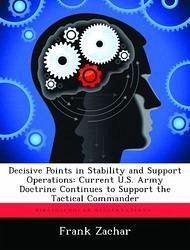Nicht lieferbar

Does Current Army Physical Fitness Training Doctrine Adequately Prepare Soldiers for War?
Versandkostenfrei!
Nicht lieferbar
The U.S. Army has continually adjusted its fitness regimen to best prepare Soldiers for combat. This paper attempts to answer a critical question: Does the current U.S. Army physical fitness training doctrine adequately prepare soldiers for war? Since 1941, FM 21-20, Physical Training, has been the sole source for fitness training. Outdated, it was replaced in March of 2010 by Army Physical Readiness Training (PRT). FM 21-20 does, however, contain building blocks of successful fitness programs. These will be used to compare the new PRT program with 2 alternative programs. The 3 programs will a...
The U.S. Army has continually adjusted its fitness regimen to best prepare Soldiers for combat. This paper attempts to answer a critical question: Does the current U.S. Army physical fitness training doctrine adequately prepare soldiers for war? Since 1941, FM 21-20, Physical Training, has been the sole source for fitness training. Outdated, it was replaced in March of 2010 by Army Physical Readiness Training (PRT). FM 21-20 does, however, contain building blocks of successful fitness programs. These will be used to compare the new PRT program with 2 alternative programs. The 3 programs will also be compared on the basis of muscle recruitment to execute 10 movements identified as critical by Training and Doctrine Command (TRADOC). Through this combined analysis, this paper will demonstrate which program best meets the evaluation criteria and trains the requisite muscles to execute the 10 movements. In conclusion, the reader will know whether the current U.S. physical fitness training doctrine best prepares soldiers for war. This work has been selected by scholars as being culturally important, and is part of the knowledge base of civilization as we know it. This work was reproduced from the original artifact, and remains as true to the original work as possible. Therefore, you will see the original copyright references, library stamps (as most of these works have been housed in our most important libraries around the world), and other notations in the work. This work is in the public domain in the United States of America, and possibly other nations. Within the United States, you may freely copy and distribute this work, as no entity (individual or corporate) has a copyright on the body of the work. As a reproduction of a historical artifact, this work may contain missing or blurred pages, poor pictures, errant marks, etc. Scholars believe, and we concur, that this work is important enough to be preserved, reproduced, and made generally available to the public. We appreciate your support of the preservation process, and thank you for being an important part of keeping this knowledge alive and relevant.










